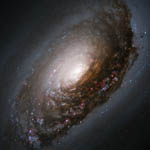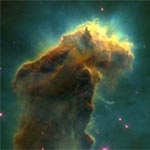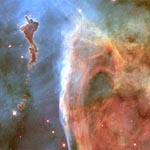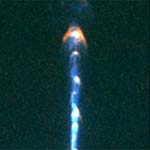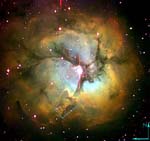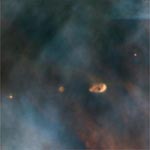| Now we'll see photos showing stars in the process of formation. We won't see any planets, but planets are thought to be common by-products of star formation so bear with me.
Since the dust clouds are so huge (generally light-years across), the whole cloud tends not to collapse into one star. Instead, it appears that different portions of a vast cloud can collapse toward different gravitational centers, with the result that one giant cloud light-years across can produce a number of stars (and presumably planetary systems). In astronomy, a nebula is any big cloud of gas and dust. Because the nebulae are often opaque, we can't normally see inside them. So, astronomers look for places where intense radiation from nearby really hot stars has blasted away the dust cloud to reveal the stars forming within.
|

